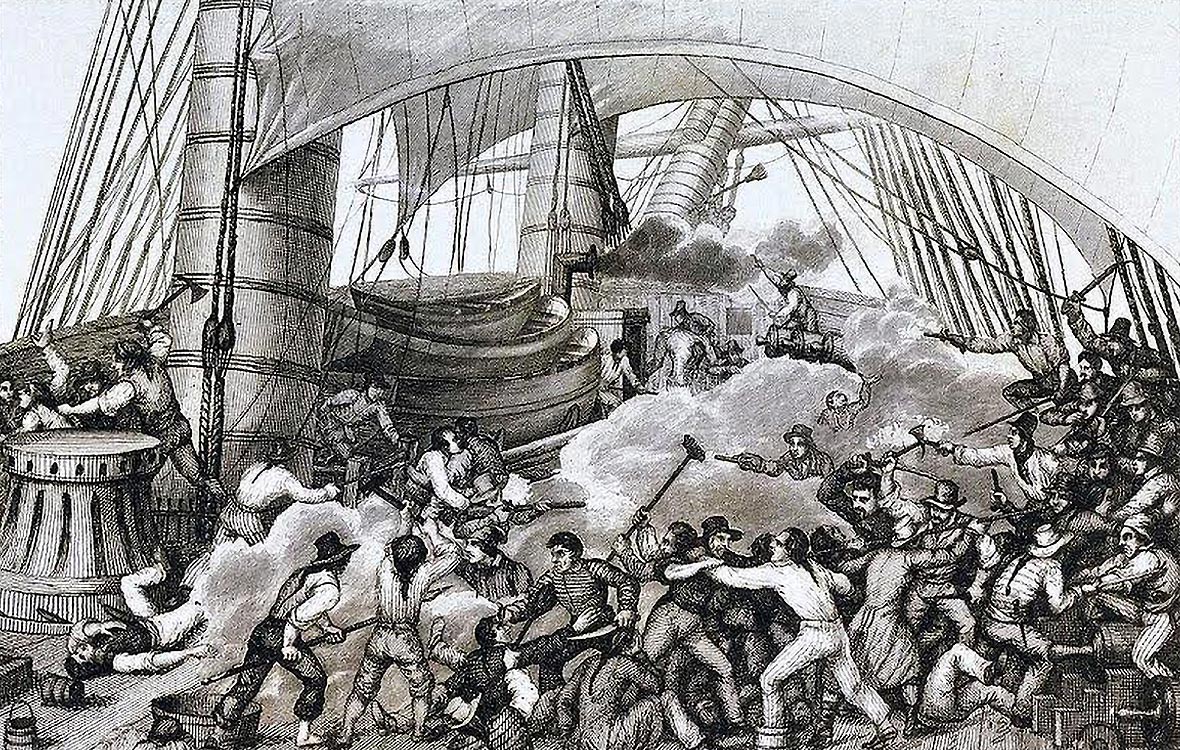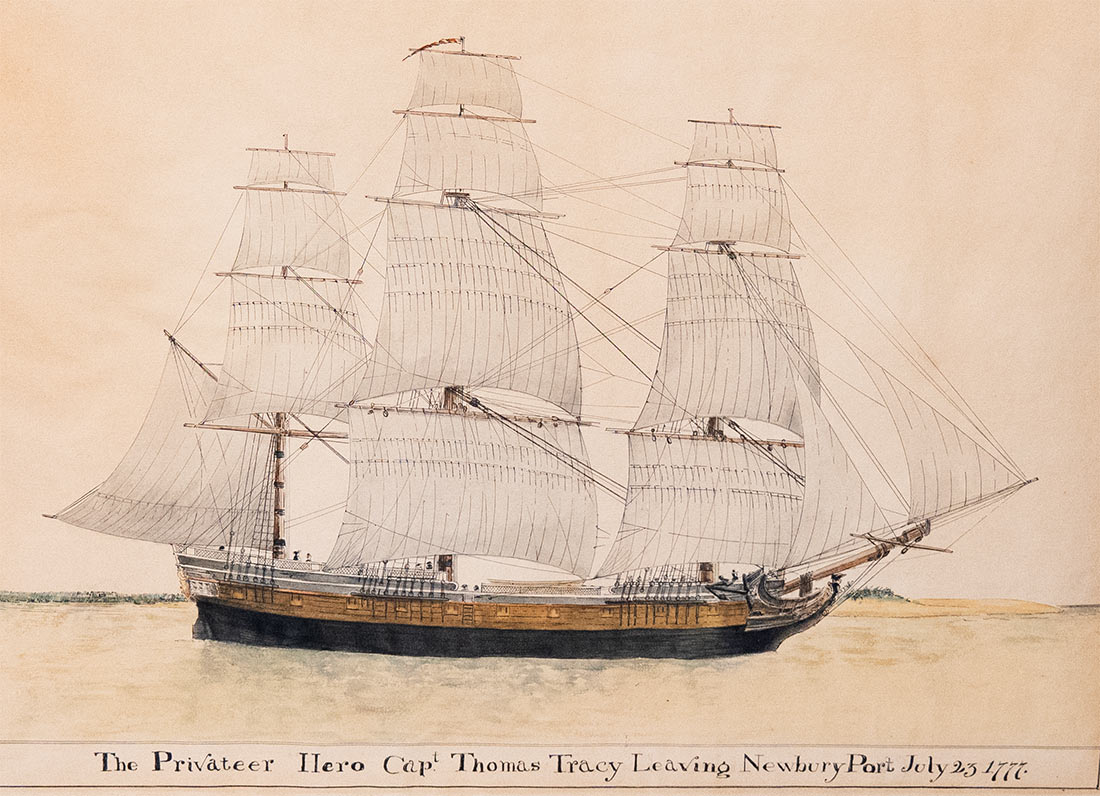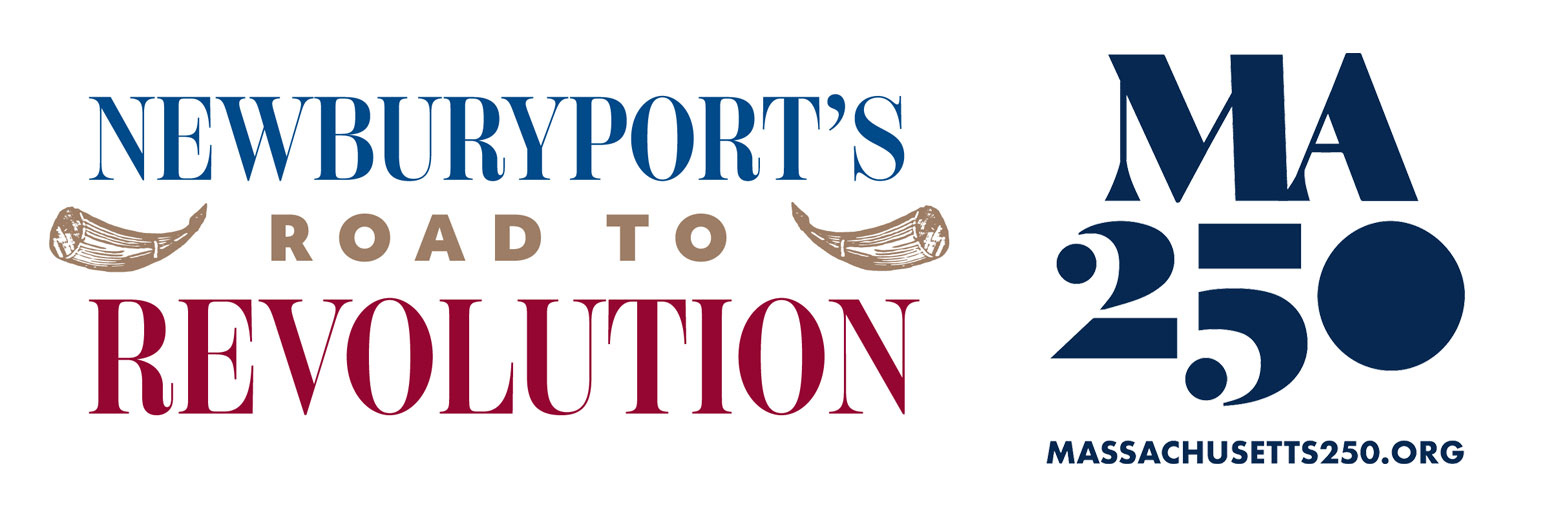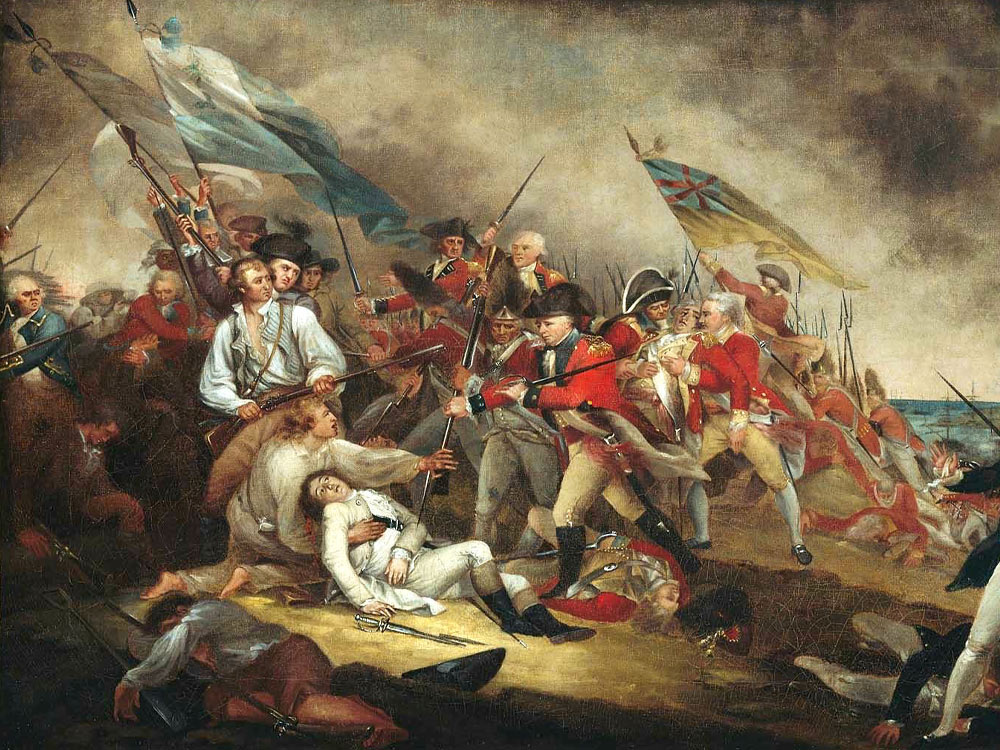David vs Goliath – Privateers vs the Royal Navy

“Boarding of Triton by the privateer Hasard (ex British pilot ship Cartier), captained by Robert Surcouf” by Ambroise Louis Garneray, 1783–1857
The Royal Navy ruled the waves. At the start of hostilities, the 13 colonies had no navy of significance. However, Washington did have an ace up his sleeve. Experienced shipwrights and seasoned sailors were in abundance, plus with maritime trade massively compromised, merchants advocated for an age-old venture-privateering.
By March 1776, privately owned armed vessels were authorized by the Continental Congress through “letters of marque” to seize enemy ships and cargo. Unlike pirates, privateers operated under legal commission, blending profit with patriotism. They conducted economic warfare up and down the eastern seaboard and even across the Atlantic as France provide safe ports. The Royal Navy was stretched thin. The British were not amused!
Newburyport quickly emerged as one of the most important hubs. Privateers had an immediate impact disrupting British commerce Once a vessel was captured, it would be sailed to a friendly port where the ship and cargo were auctioned off. Profits were split. Half was given to the Continental Congress, and the remainder divided among the captain, crew, and investors. Supplies, such as gunpowder and cannon, were rushed to the battlefields.

Merchants financed these ventures, seeing them as both patriotic duty and high-risk opportunity. Many found fortune, but others paid a steep price—crews faced the cruel sea, fierce resistance, and the constant threat of imprisonment or death in British jails. The British treated those captures very harshly as it wanted to disincentivize privateering. Privateers made up most of the prisoners of war and thousands died aboard prison ships.
More than 1,700 letters of marque (on a per voyage basis) were issued to 800 vessels. This compares to fewer than 60 Continental Navy vessels at peak strength. These privateers captured or destroyed 600 British ships, caused an estimated $18,000,000 in damages, and weakened Britain’s economic grip while contributing to American resilience. Nathaniel Tracy’s fleet alone, captured 120 British vessels.
Historians estimate approximately 6,800 Americans were killed in battle, 6,100 were injured and 20,000 taken prisoner, of which 12,000 died from disease (mostly in the prison ships in New York Harbor). Alarmingly, 22 Newburyport vessels were lost along with an estimated combined crew of 1,000! Today, we honor war dead at battlefield sites, but not so for those young lads who found a watery grave.
Privateering was an example of asymmetric warfare against a much stronger adversary and a cost-effective, force-multiplying way to wage economic warfare on Britain. While their motivation may often have been split between patriotism and profit, and their independence sometimes at odds with broader military goals, the sheer volume of privateers at sea forced the Royal Navy to divert assets to protect valuable convoys and cargo, with a commensurate increase in business risk and insurance rates.


Special Thanks to:


Plan Your Visit
Plan Your Visit
- Museum Hours
Sunday: 12 pm - 5 pm
Closed Monday
- Tickets
Free for NBPT residents, kids under 12, and museum members
Cost of admission includes access to the Discovery Center.
- Parking
City parking is available adjacent to the museum. View parking lot directions.

